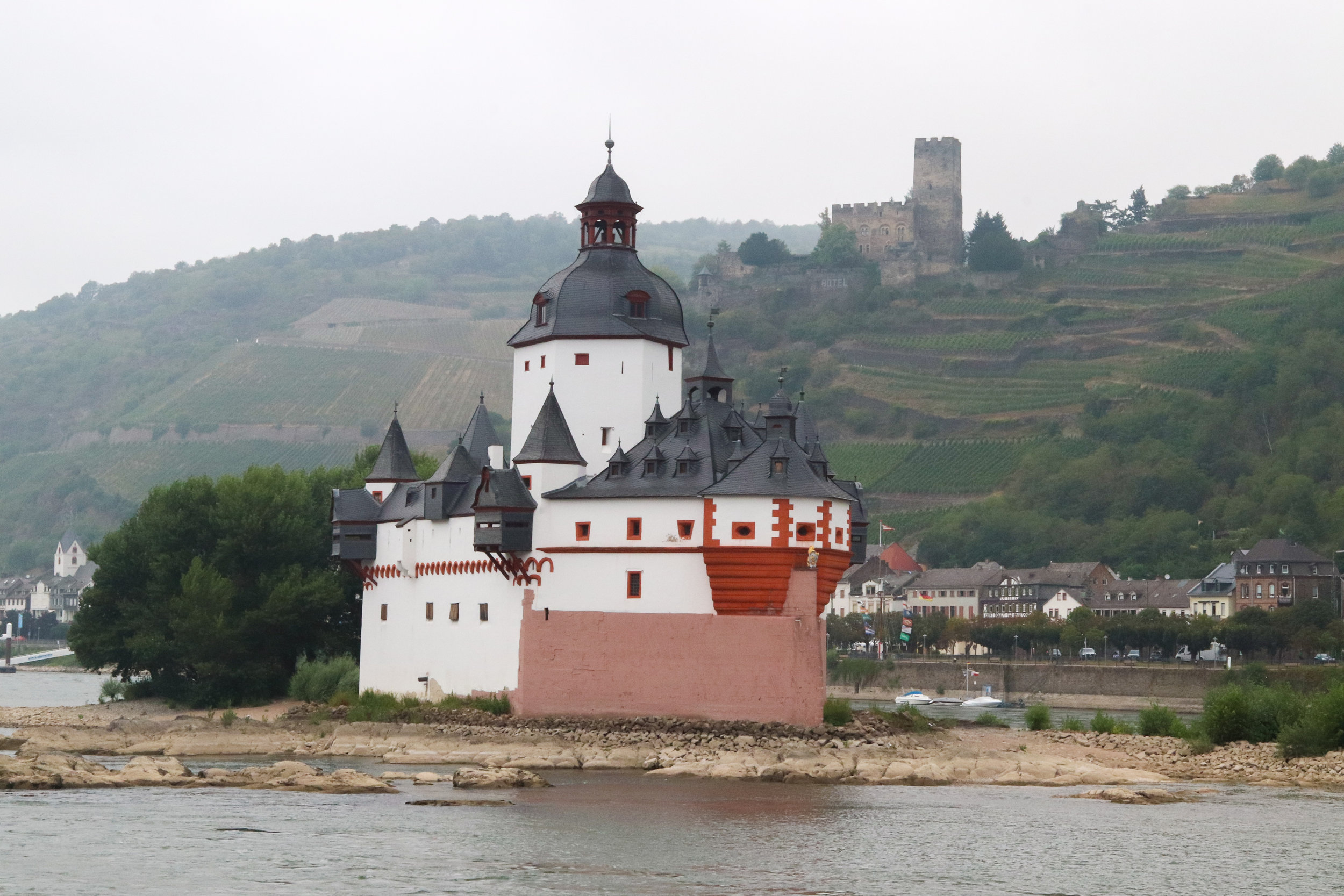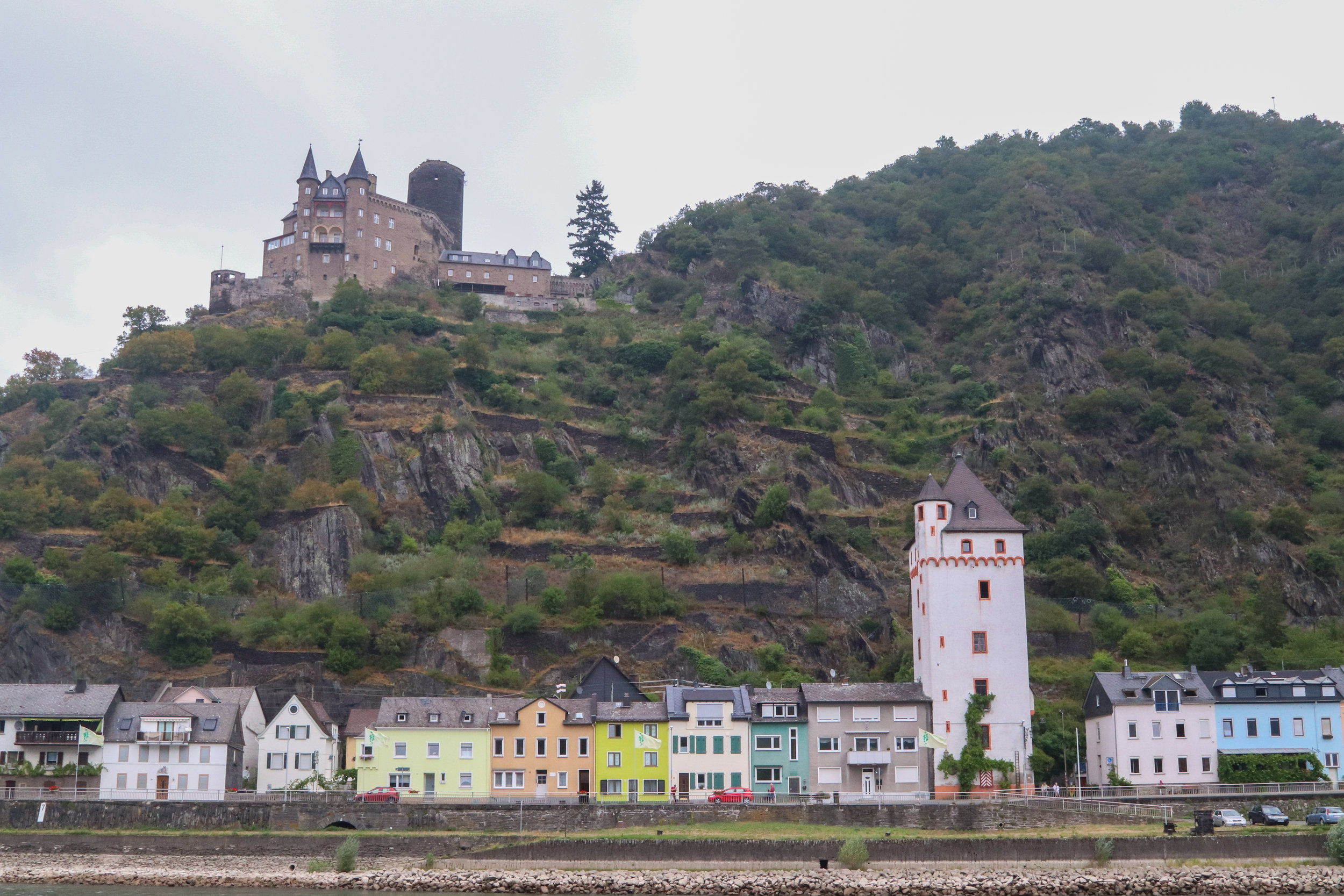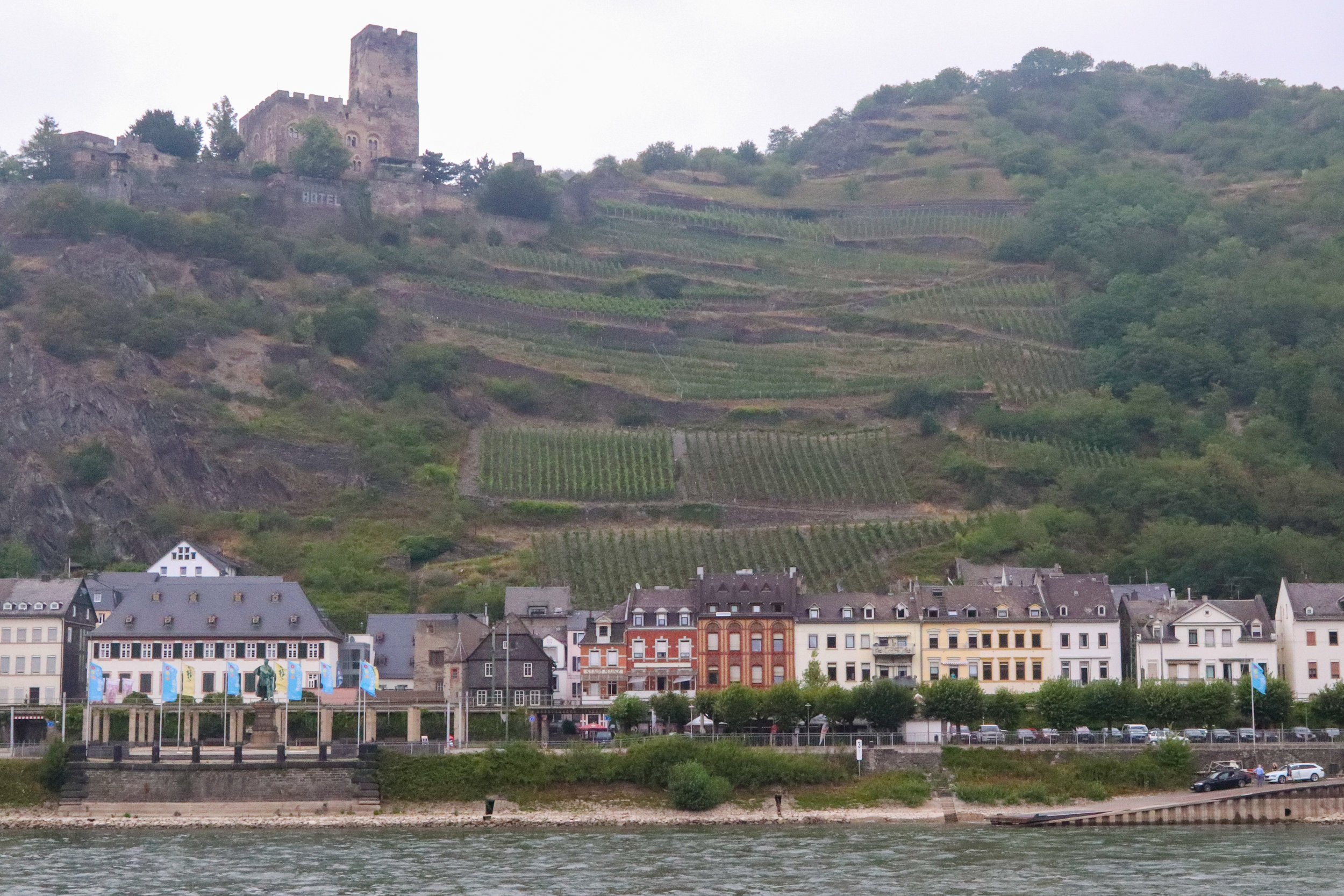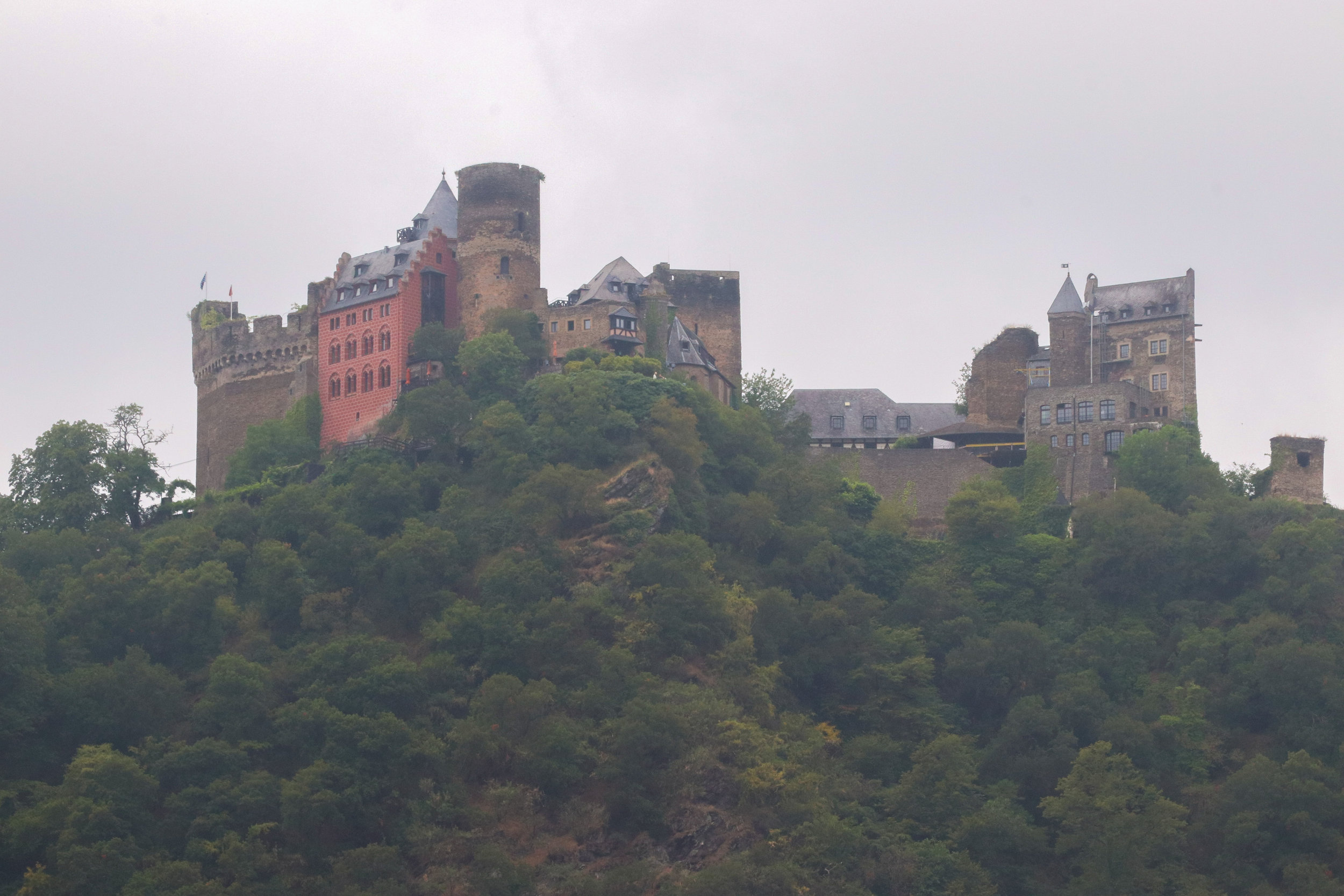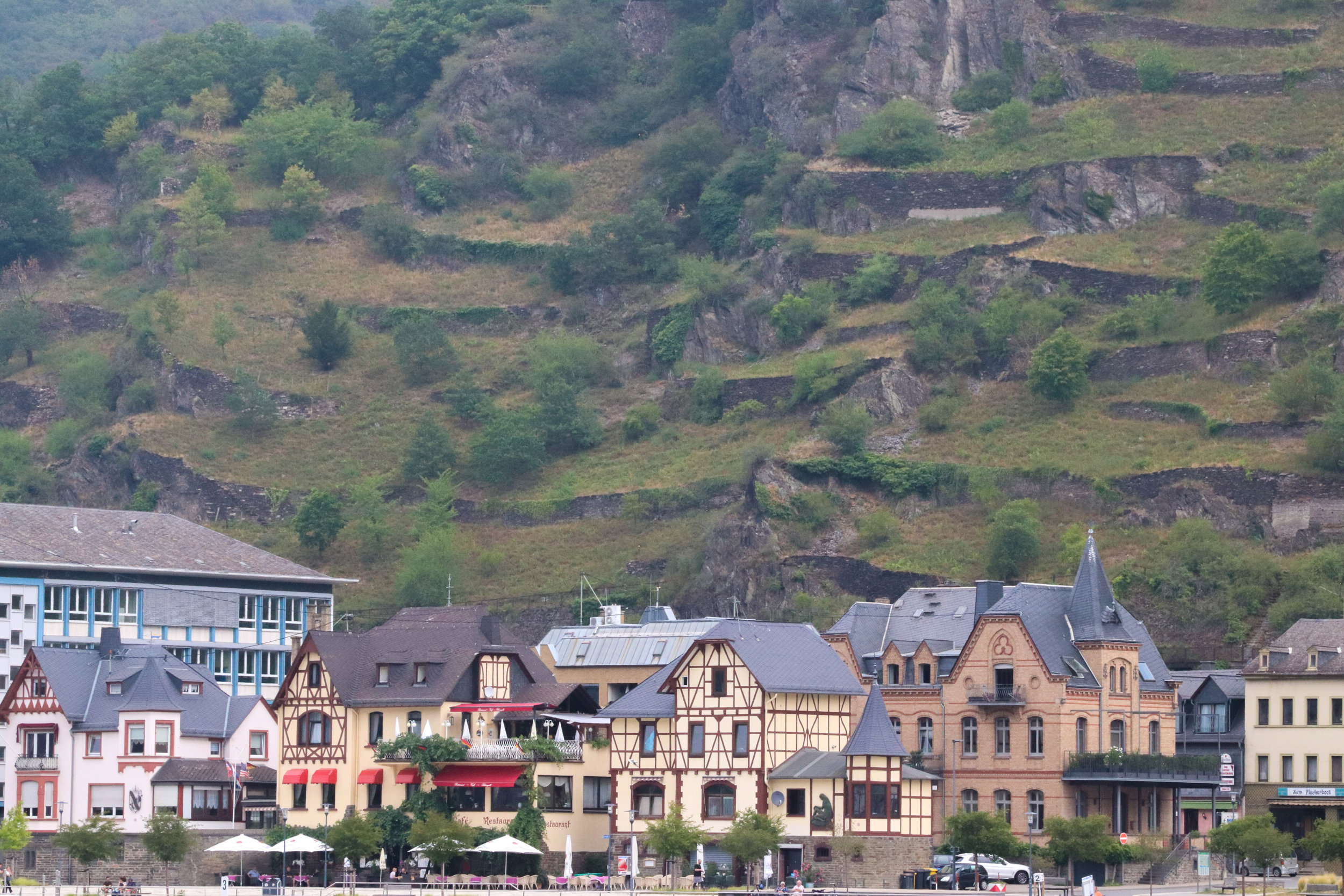Bacharach, Germany is one of the many picturesque towns found in the Upper Middle Rhine Valley, a UNESCO World Heritage Site. It is a medieval village of cobblestone streets and half-timbered houses, most of which were built before the sixteenth century. The name Bacharach came from Bacchus, the god of wine; fitting, as the town sits in the valley of hills lined with Riesling and served as a major wine trading and shipping station in the Middle Ages.
The Upper Middle Rhine Valley extends 65 kilometers in length from Bingen to Koblenz and has more castles than any other river in the world. Its landscape and riverfront villages have inspired fairy tails, music, poetry, and paintings for centuries. You could easily spend weeks in this region, staying between villages, riding bikes along the paths that follow the river, visiting wineries, and relaxing in the quiet, storybook atmosphere. Garrett and I spent two nights in Bacharach, and if it weren’t for family waiting for us in Munich, we could have easily extended our stay. The town is, however, quite small, and easy to see in a short amount of time.
Here are my tips for visiting Bacharach:
Accommodation:
Garrett and I stayed at the Rhein Hotel and would do so again. It’s directly within the fortress walls, close to the water, and has easy walking access to everything in town. Our hotel room even had a sauna in it, which we got a kick out of but didn’t end up using because it was too hot outside.
If you are looking for a less expensive option, there’s a hostel in a 12th-century castle! It’s called Hostel Burg Stahleck Bacharach and I’ve heard great things from people who stayed there. It’s popular, though, so if you’re planning to go that route, book well in advance.
There are plenty of other hotel options as well. Bacharach is a small town, but it isn’t short on accommodation or restaurants!
Dining:
We found that people in Germany eat on the earlier side when compared to the rest of Europe, between 6:00pm and 8:00pm. I’d recommend making reservations or walking into a restaurant by 7:00pm to be on the safe side.
Altes Haus is a restaurant inside of a medieval timber-frame house from 1368. You feel like you’re stepping back in time as soon as you walk through the doors. The menu is limited, which, in my opinion, is a good thing, and they had what I thought to be the best wiener schnitzel in all of Germany and Austria (and I ate a lot of wiener schnitzel). The service is slow here and things come out of the kitchen as they’re ready, so don’t be surprised if you get your meal a few minutes before your companion’s.
Stuebers Restaurant, located in the Rhein Hotel, focuses on regional, slow-cooked dinners. It is a bit pricier than other restaurants in town, but the food is good. You can sit outside on the terrace along the railway line or inside of the hotel dining room. We sat outside and enjoyed the summer warmth!
Restaurant Zeus is a good option if you’re looking to get a break from traditional German fare, as it serves Greek and German inspired food on its inventive menu.
As I’ve mentioned, Bacharach is small, and there are plenty of restaurants to choose from, all full of charm. I don’t think you could go wrong with just going by feel and walking into whatever places strikes your fancy.
Things to Do:
Stroll through town and marvel at the crooked half-timbered houses! This is the simplest and perhaps most enjoyable way to fill your time. There’s also a nice path along the riverfront. Bacharach is gorgeous. Soak it all in.
Walk up to the tower, known as Postenturm (Post Tower), to get the best view of the village and winding river. It’s a quick, uphill walk from town and through vineyards to get to the tower. Climb to the top to get a view of all of Bacharach from above! Entry to the tower is free.
Learn about the history of the town. Although Bacharach is quaint, it certainly has its fair share of dark history. Violent acts against Jewish people date back to the 13th century and continued on through the Second World War.
Take a day river cruise up (or down!) the Rhine. We spent a few hours doing this one afternoon and were mesmerized by all of the castles, colorful houses, and vineyards climbing up the mountains. We took the boat from Bacharach to Boppard, the northernmost stop on the leg. St. Goar is another popular destination, but really, you could step off of the boat at any of the stops and end up in a beautiful storybook village! Here’s the schedule for the boats, and you buy tickets at the dock.
Drink wine! The hills of Bacharach are lined with Riesling vineyards. I’m not a Riesling drinker in the States because it’s too sweet—it’s different in Germany. Definitely give it a try. Order local wine at the restaurants or go for a tasting at Weingut Fritz Bastian or Weingut Toni Just Hahnenhof.
Getting there:
Bacharach is about 75 km away from the Frankfurt airport, and you can get there in as little as an hour by car or by train. We took the train, all of which are operated by Deutsche Bahn, the German railway system.
There are two types of trains in Germany, the ICE trains and Regional (Regio-DB or RB) trains. ICE are Germany’s high-speed trains, usually used for long distance travel between major cities. Regional trains allow you to connect to smaller cities, and are noted by any abbreviations other than ICE.
There is a train station below Terminal 1 by Arrival Hall B-1 in the Frankfurt airport. Make sure to follow signs for the RegionalBanhof. You can purchase your train ticket at a kiosk in the station using cash or a credit card, and a one-way ticket costs about 12 € per person. These tickets cannot be purchased in advance; but for longer trips, I suggest pre-booking online here.
You will have two train options: a direct, non-stop train from the airport to Bacharach. This route is called the Koblenz Hbf. It is the ideal route because it only takes an hour and doesn’t involve stopovers but it only runs every two hours. We missed this train over confusion surrounding platforms (Gleis is platform in Germany!) and ended up taking a connecting train.
If you’re taking the connecting train, you want to head to Mainz Hauptbahnhof and switch to Bacharach there. Note that Hauptbahnhof translates to “main train station.” The Frankfurt airport does have Wifi, so when you land, I advise checking Google Maps to see what train options are available to you at the appropriate time! Also note that the Bacharach train station is very small, so pay attention to the stops—it could be easy to pass by accident.
So, there you have it—my guide to Bacharach. I hope you make it there one day! And if you do, feel free to reach out with any questions you might have.






